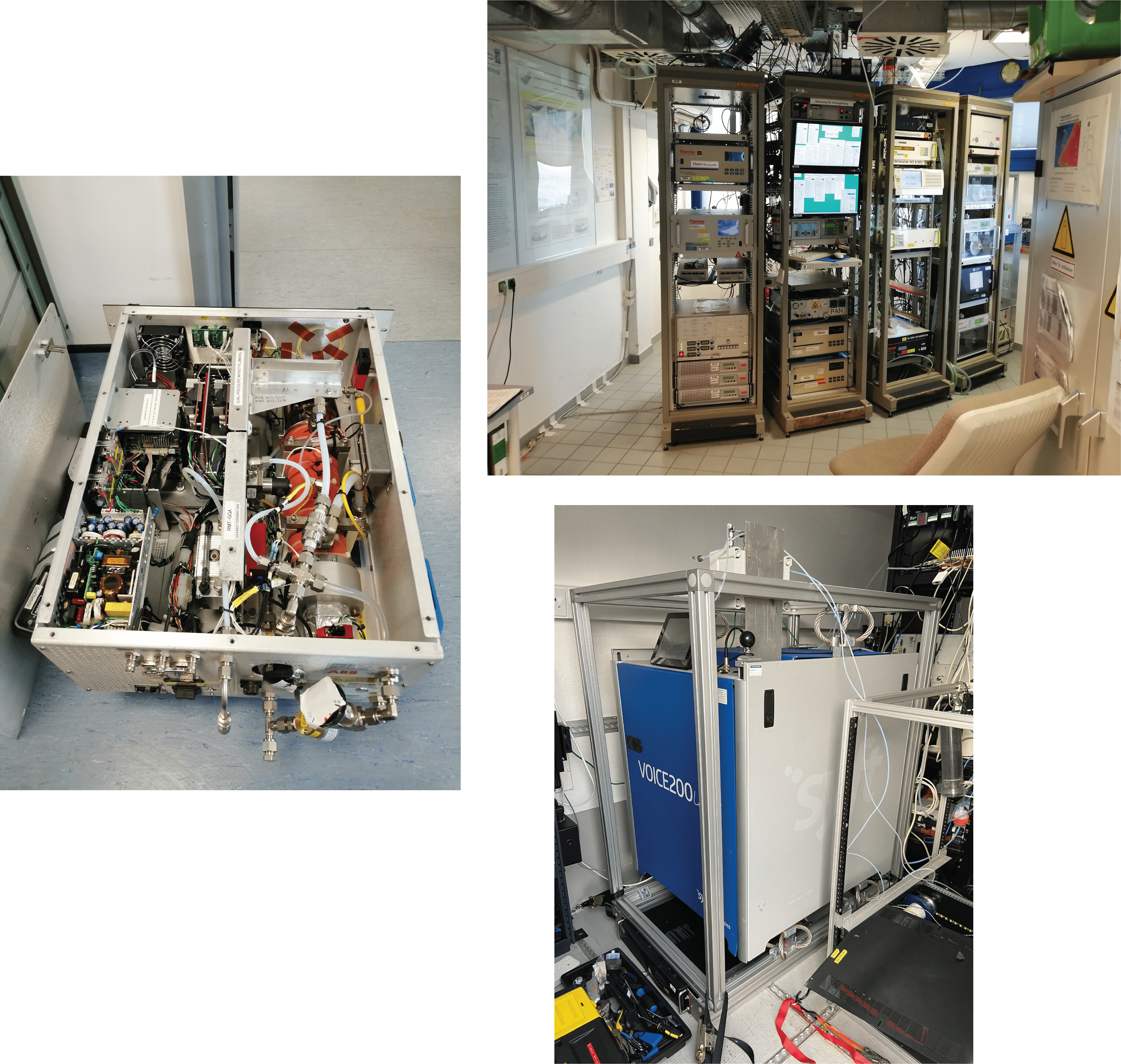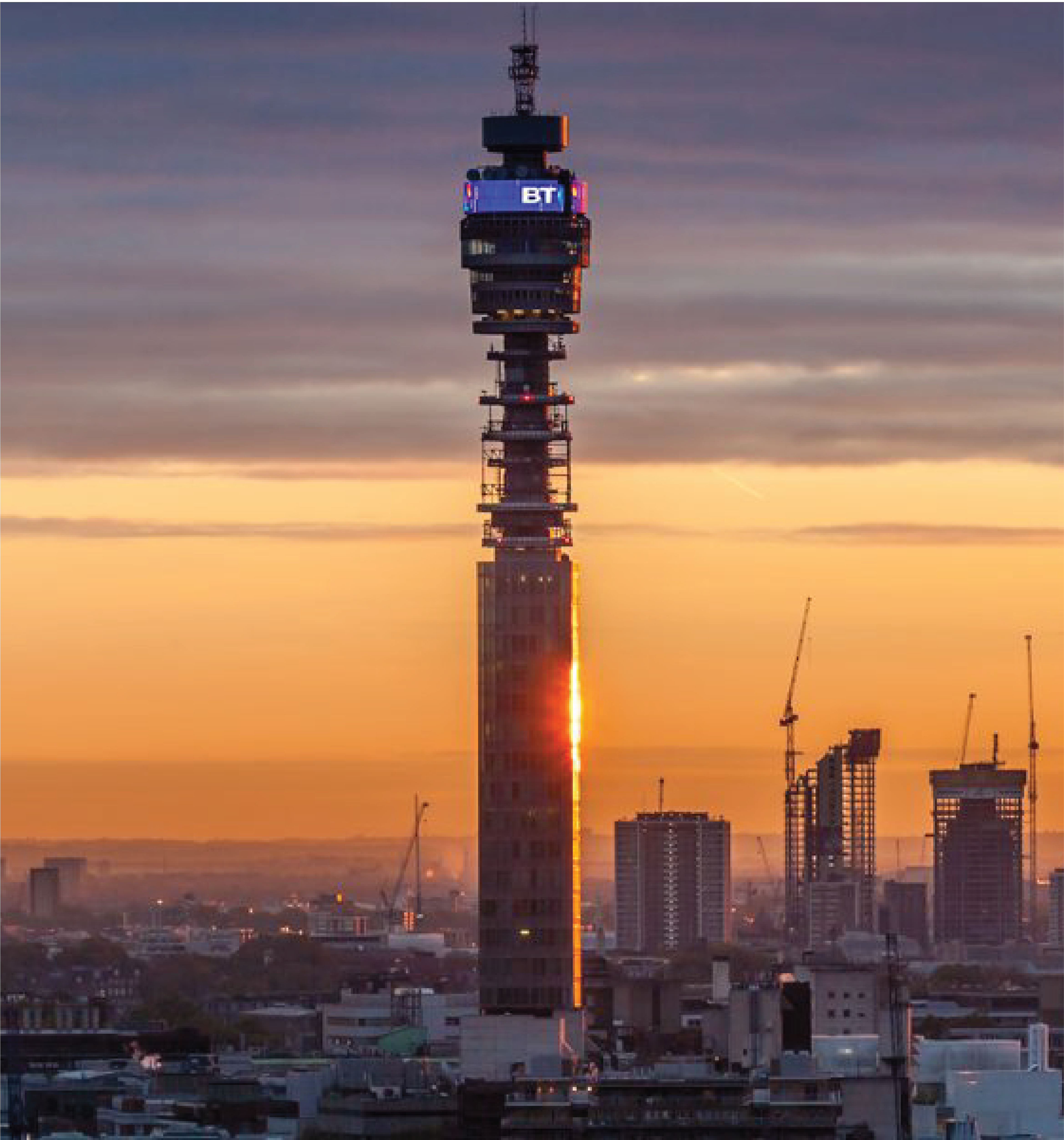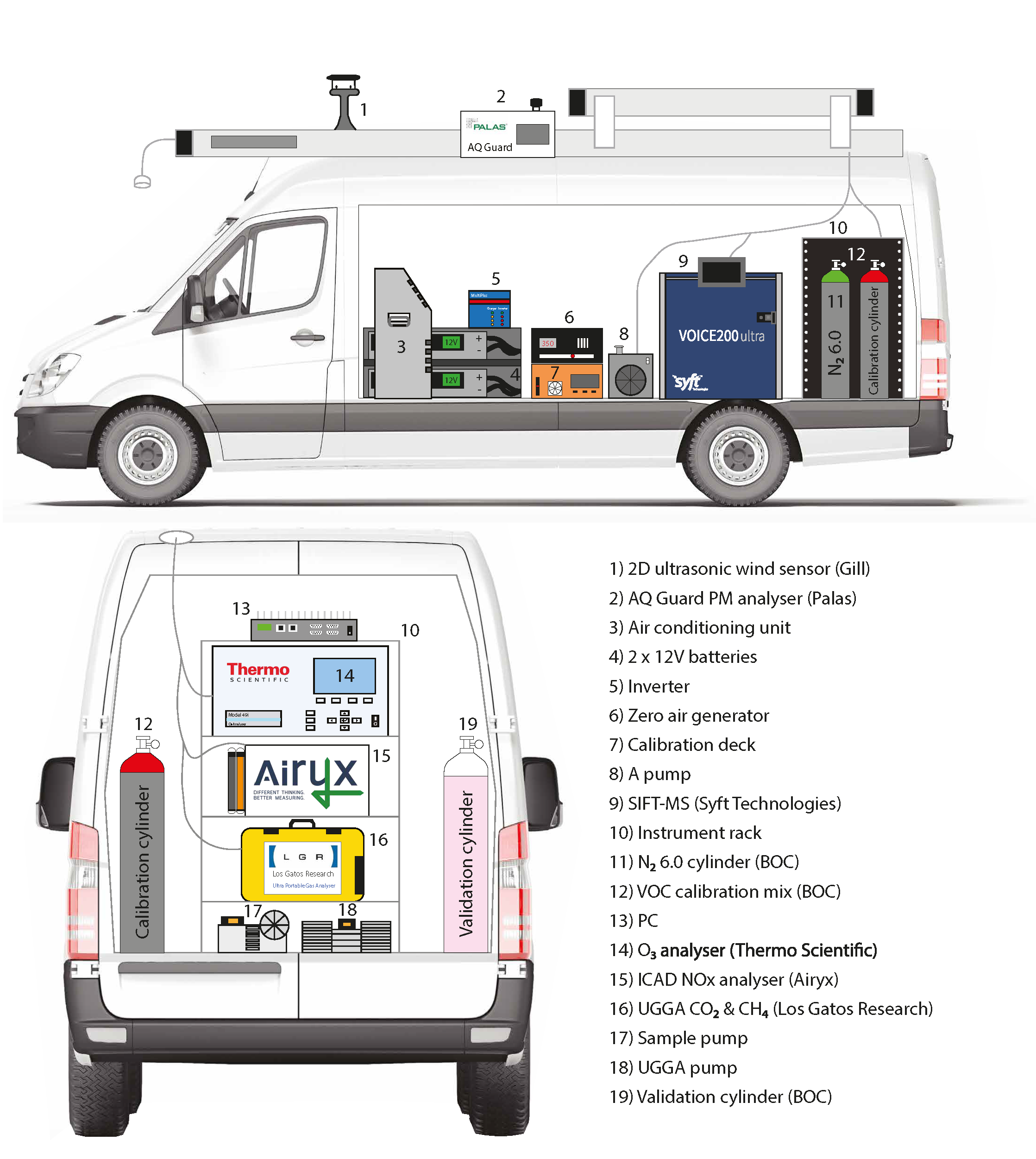Research
Instrumentation

I am an experienced user of different spectroscopic and mass spectrometric techniques for the sensitive, high time resolution measurement of gas phase species in the atmosphere. These include:
- Proton transfer reaction time of flight mass spectrometry (PTR-TOF-MS) and selective ion flow tube mass spectrometry (SIFT-MS) for the quantification of speciated volatile organic compounds (VOCs).
- High sensitivity chemiluminescence and differential optical absorption spectroscopy (DOAS) for the measurement of nitrogen oxides (NO + NO2).
- Integrated cavity output spectroscopy (ICOS) for measurements of methane (CH4), carbon dioxide (CO2), water vapour (H2O) and nitrous oxide (N2O).
- Vacuum ultra-violet (VUV) fluorescence for measurements of carbon monoxide (CO).
- UV spectroscopy for measurements of ozone (O3).
Surface-atmosphere exchange
 The surface-atmosphere exchange of trace gases influences the location and severity of the major global environmental problems of poor air quality and climate change. Improving our knowledge of the factors at play in these complex problems is essential for the identification of effective mitigation strategies. I use a technique called eddy covariance (EC) to calculate vertical turbulent fluxes (or emissions) of the above trace gases as a way of quantifying surface-atmosphere exchange. EC is a micrometeorological statistical method that calculates fluxes from high frequency wind and scalar data from either a tall tower (for high temporal resolution) or aircraft (high spatial resolution). My experience lies in the use of the publicly available eddy4R and InnFlux packages using both traditional EC and continuous wavelet transformation methodologies. My analysis is typically conducted in R within Docker containers for high throughput processing on computer clusters.
The surface-atmosphere exchange of trace gases influences the location and severity of the major global environmental problems of poor air quality and climate change. Improving our knowledge of the factors at play in these complex problems is essential for the identification of effective mitigation strategies. I use a technique called eddy covariance (EC) to calculate vertical turbulent fluxes (or emissions) of the above trace gases as a way of quantifying surface-atmosphere exchange. EC is a micrometeorological statistical method that calculates fluxes from high frequency wind and scalar data from either a tall tower (for high temporal resolution) or aircraft (high spatial resolution). My experience lies in the use of the publicly available eddy4R and InnFlux packages using both traditional EC and continuous wavelet transformation methodologies. My analysis is typically conducted in R within Docker containers for high throughput processing on computer clusters.
My previous applications of EC have involved leading long-term measurements of NOx and CO2 fluxes from the BT Tower in central London. These long-term measurements in a megacity were the first of their kind and unearthed the effectiveness of traffic emissions control policies like the ultra-low emissions zone (ULEZ) and highlighted the growing importance of natural gas combustion in the heating sector to urban NOx emissions. I have contributed to airborne flux measurements of CH4 during my time at the Facility for Airborne Atmospheric Measurements (FAAM). This quantified the magnitude, and improved our understanding of the spatial drivers, of CH4 emissions from Scandanavian wetlands. My current project focuses on the quantification and source apportionment of CH4 and VOCs in the urban environment from a tall tower in Berkeley, California.
Emission factors and source characterisation

Emissions inventories used to inform policy decision making are often constructed “bottom-up” using emission factors and activity statistics. The emission factors have large uncertainties due to either their derivation in the laboratory under conditions not representative of the real-world or by simply being outdated. The use of mobile laboratories like converted aircraft or road vehicles fitted with atmospheric instrumentation facilitates the measurement of these emission factors in the field. The use of statistical methods for plume detection and integration with a full suite of gas phase instrumentation can fully characterise different sources and improve inventory accuracy. With an airborne platform, I have been involved in the measurement of emission factors and regulation compliance for shipping SO2 that result from new limits on maritime sulfur fuel content, oil and gas rig venting and flaring operations, and African wildfires including time evolved O3 formation. Additionally, I have used a converted van to successfully compute road transport VOC emission factors resulting in significant policy implications.
Carbon footprint calculations
I lead the University of York Department of Chemistry Net Zero budget calculation. The full report is available here
Research projects involved in:
- Investigating changes in urban methane using a multiplatform approach
- Integrated Research Observation System for Clean Air (OSCA)
- Atmospheric Reactive Nitrogen Cycling over the Ocean (ARNA)
- Atmospheric Composition and Radiative forcing changes due to UN International Ship Emissions regulations (ACRUISE)
- Methane Observations and Yearly Assessments (MOYA)
- North Atlantic Climate System Integrated Study (ACSIS)
